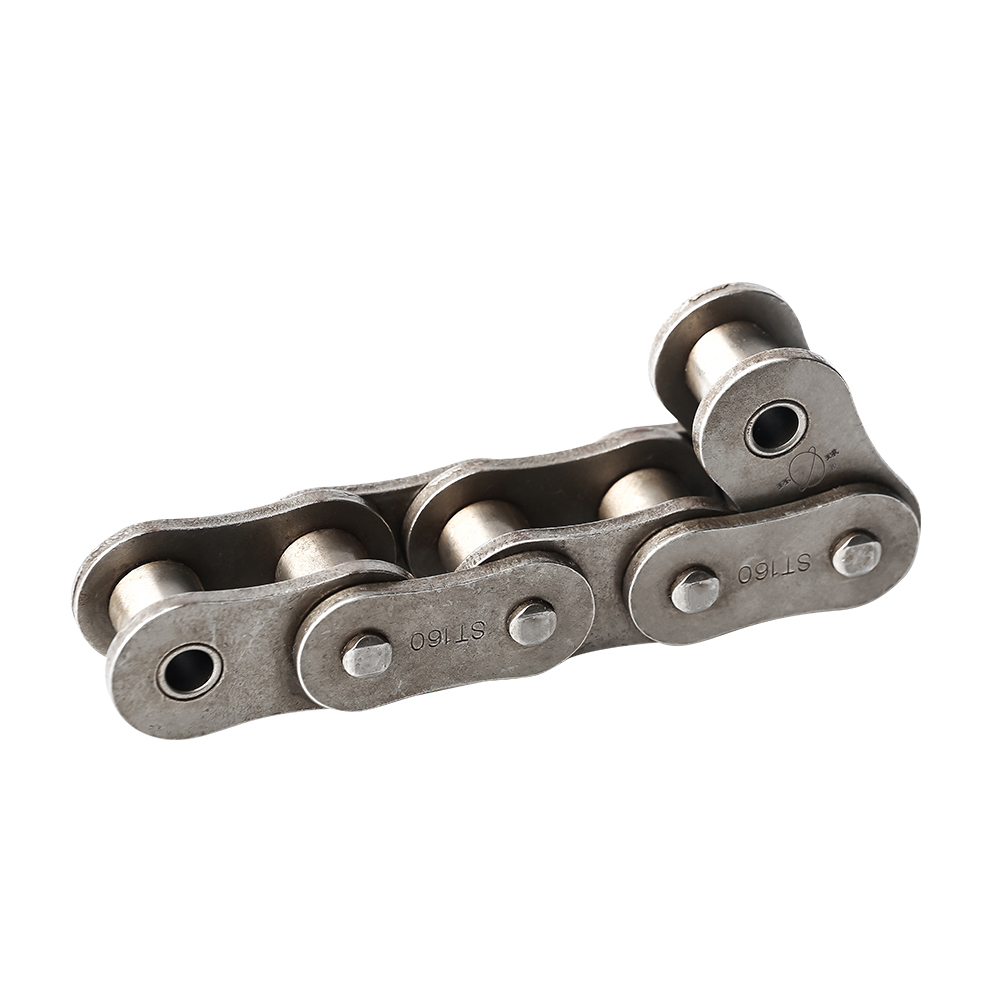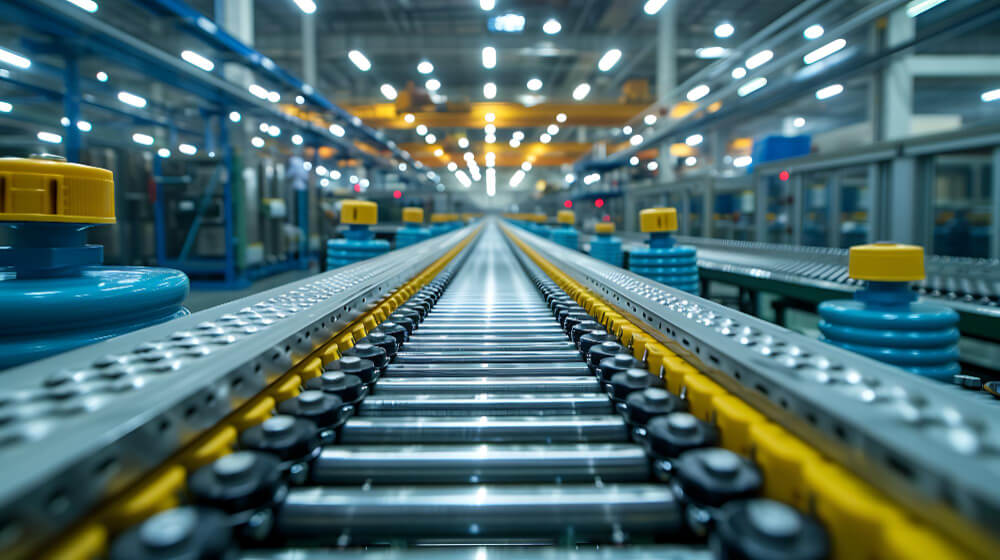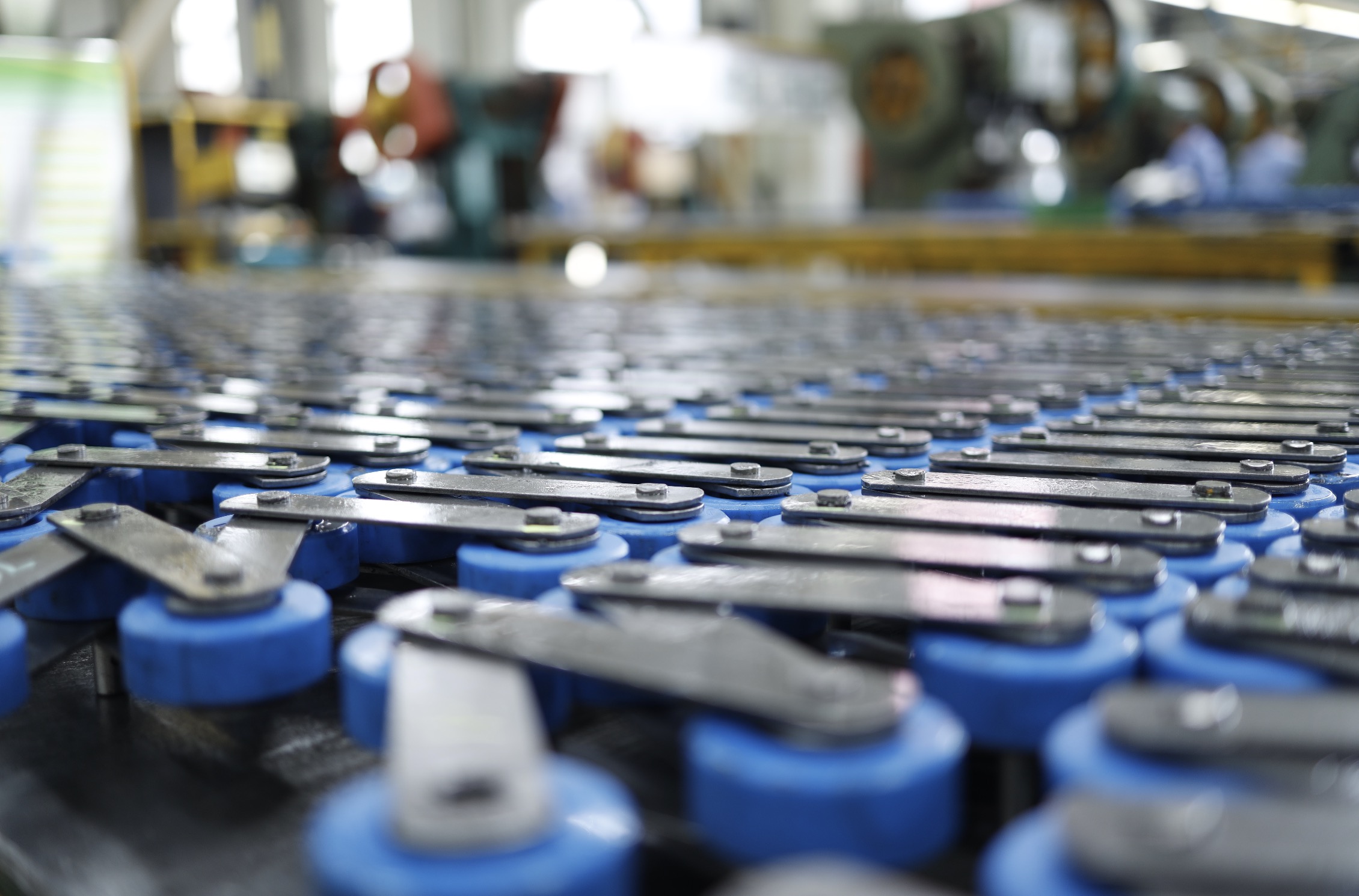Roller chain accessories are essential components that enhance the functionality, maintenance, and longevity of roller chains used in various industrial applications.
These accessories ensure optimal performance, facilitate easy maintenance, and help diagnose and address issues related to roller chains.
What is the purpose of roller chain attachments?
Roller chain attachments are designed to extend the versatility of roller chains by allowing them to perform additional tasks beyond simple power transmission.
They enable the chain to handle specific loads, navigate particular paths, and interact with other mechanical components in complex machinery.
These attachments ensure the roller chain can adapt to various industrial applications, enhancing its overall utility and efficiency.
Common Roller Chain Accessories
#1. Roller Chain Breaker
A roller chain breaker is an essential tool used to cut roller chains to the desired length without causing damage to the links.
This tool is crucial for adjusting chain lengths during installation or maintenance, ensuring precise cuts and clean removal of pins.
#2. Roller Chain Sprocket
Roller chain sprockets are toothed wheels that engage with the roller chain to transmit power.
They come in various sizes and tooth configurations to match different chain pitches.
Sprockets are vital for ensuring smooth and efficient power transmission, minimizing wear on the chain, and extending its lifespan.
#3. Chain Puller Tool
A chain puller tool is used to align and tension roller chains during installation and maintenance.
It ensures the chain is correctly positioned on the sprockets, preventing misalignment and reducing the risk of premature wear and failure.
#4. Chain Wear Gauge
A chain wear gauge is a diagnostic tool used to measure the elongation and wear of a roller chain.
By regularly checking the chain with a wear gauge, operators can determine when the chain needs to be replaced, preventing unexpected downtime and mechanical failures.
#5. Roller Chain Tensioner
A roller chain tensioner maintains the proper tension in the roller chain to ensure smooth operation and reduce chain slippage risk.
Proper tensioning helps prevent excessive wear on the chain and sprockets. Thus, extending their service life.
Roller Chain Attachments
Roller chain link accessories are vital for customizing roller chains to meet specific operational requirements.
These attachments allow the chain to perform additional functions and enhance its adaptability.
#1. Connecting (Master) Links
Connecting links, also known as master links, are used to join two ends of a roller chain together.
They are essential for making quick and secure connections, especially during chain installation or repairs.
#2. Offset (Half) Link
An offset link, or half link, is used to adjust the length of a roller chain by adding or removing a single pitch.
This flexibility is crucial for achieving the desired chain length in applications where precise adjustments are necessary.
#3. Roller Link
A roller link consists of a pair of inner links joined by a roller and is used to extend the length of the chain.
It plays a critical role in maintaining the structural integrity and smooth operation of the roller chain.
#4. Attachment Links
Attachment links are specialized links that include additional components such as extended pins, tabs, or plates.
These are used to connect the chain to other mechanical parts or to carry objects, enhancing the chain’s functionality in conveying and lifting applications.
What parts do roller chains include?
#1. Inner Link
The inner link consists of two inner plates connected by two pins, which hold the rollers. This component forms the basic building block of the roller chain, allowing it to articulate smoothly.
#2. Outer Link
The outer link connects to the inner link and consists of two outer plates and two pins. It provides structural integrity and transmits force from one link to the next.
#3. Rollers
Rollers sit between the inner plates and rotate around the pins, reducing friction between the chain and the sprocket. They are crucial for smooth engagement with the sprocket teeth.
#4. Pins
Pins hold the inner and outer plates together and allow the rollers to rotate. They bear the load and are critical for the chain’s strength and flexibility.
#5. Bushings
Bushings fit inside the rollers and around the pins, providing a bearing surface. They help reduce wear on the pins and rollers, extending the chain’s lifespan.
How do you maintain roller chains?
Tip #1. Lubrication
Regular lubrication reduces friction and wear, ensuring smooth operation. Use high-quality lubricants and apply them consistently to all moving parts.
Tip #2. Tension Adjustment
Maintain proper tension to prevent slippage and excessive wear. Use a chain tensioner to keep the chain taut without over-tightening.
Tip #3. Cleaning
Regularly clean the chain to remove dirt and debris that can cause wear and corrosion. Use appropriate cleaning solutions and brushes for thorough cleaning.
Tip #4. Inspection
Perform routine inspections to check for signs of wear, elongation, or damage. Replace worn components promptly to prevent failures.
How to Replace Roller Chains
Step #1: Measure the Existing Chain
Use a chain wear gauge to measure the elongation and wear of the existing chain. Replace the chain if it exceeds the recommended wear limit.
Step #2: Remove the Old Chain
Use a roller chain breaker to cut and remove the old chain. Ensure the chain is properly disengaged from the sprockets.
Step #3: Install the New Chain
Align the new chain with the sprockets and use a chain puller tool to position it correctly. Connect the ends using a master link.
Step #4: Adjust Tension
Use a roller chain tensioner to adjust the tension, ensuring the chain is taut but not overly tight.
Step #5: Lubricate
Apply lubricant to the new chain to reduce friction and wear.
How can you tell if a chain is good quality?
#1. Material
High-quality chains are made from durable materials such as alloy steel. Check the material specifications to ensure durability and strength.
#2. Finish
A good quality chain will have a smooth, even finish, free from defects or rough edges. This indicates precision manufacturing and attention to detail.
#3. Markings
Quality chains are marked with grade and manufacturer information. These markings indicate compliance with industry standards.
#4. Performance
Check for certifications or performance data that demonstrate the chain’s reliability and strength under various conditions.
More Roller Chain FAQs
What is the disadvantage of roller chains?
Roller chains can be noisy and require regular maintenance, including lubrication and tension adjustments, to prevent premature wear and failure.
How to lubricate roller chains?
Apply lubricant evenly across all moving parts, ensuring it penetrates the rollers, pins, and bushings. Use high-quality lubricants suitable for the chain’s operating conditions.
How do I know if my roller chain is bad?
Signs of a bad roller chain include excessive elongation, visible wear on the rollers and pins, and frequent need for tension adjustments.
What is the most common cause of roller chain failure?
The most common cause of roller chain failure is inadequate lubrication, leading to increased friction, wear, and eventual breakage.
What is the proper tension for a roller chain?
The proper tension allows for slight movement or slack, typically around 2-3% of the chain’s length. This prevents excessive wear while ensuring smooth operation.
When should I replace my roller chain?
Replace the roller chain when it shows significant elongation, wear, or damage, or when it no longer maintains proper tension.
Best Roller Chain Supplier in China: Universal Chain
Universal Chain is a leading supplier of high-quality roller chains and accessories, known for their durability and superior performance in a variety of industrial applications.
With a commitment to meeting international standards, Universal Chain offers an extensive range of products designed to cater to diverse needs.
Their roller chains are manufactured using premium materials and advanced technology, ensuring reliability and longevity.
For more information or to purchase roller chain products, contact Universal Chain.
Their expert team is ready to assist with all your roller chain requirements, providing tailored solutions to enhance your operational efficiency.




